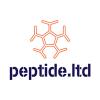The data on magnesium l-threonate is getting more and more interesting. Check out this video and free full text article (mostly about the role of threonate itself!) if you have the time.
It appears as though threonate uses GLUT transporters to get into neurons and brings Mg along with it when they are bonded. Very interesting.
It also turns out that magnesium is a cofactor for over 600 enzymes (instead of the previously reported 300) and is an activator in 200 more! Important stuff.
http://www.sciencedi...028390816302040
Neuropharmacology. 2016 May 10. pii: S0028-3908(16)30204-0. doi: 10.1016/j.neuropharm.2016.05.006. [Epub ahead of print]
Regulation of structural and functional synapse density by L-threonate through modulation of intraneuronal magnesium concentration.Oral administration of the combination of L-threonate (threonate) and magnesium (Mg2+) in the form of L-Threonic acid Magnesium salt (L-TAMS) can enhance learning and memory in young rats and prevent memory decline in aging rats and in Alzheimer's disease model mice. Recent results from a human clinical trial demonstrate the efficacy of L-TAMS in restoring global cognitive abilities of older adults. Previously, we reported that neuronal intracellular Mg2+ serves as a critical signaling molecule for controlling synapse density. The elevation of brain Mg2+ by oral administration of L-TAMS in intact animals plays a significant role in mediating the therapeutic effects of L-TAMS. The current study sought to elucidate the unique role of threonate. We aimed to understand if threonate acts directly to elevate intraneuronal Mg2+, and why Mg2+ given without threonate is ineffective for enhancing learning and memory ability. We discovered that threonate is naturally present in cerebrospinal fluid (CSF) and oral treatment with L-TAMS elevated CSF threonate. In cultured hippocampal neurons, threonate treatment directly induced an increase in intracellular Mg2+ concentration. Functionally, elevating threonate upregulated expression of NR2B-containing NMDAR, boosted mitochondrial membrane potential (ΔΨm), and increased functional synapse density in neuronal cultures. These effects are unique to threonate, as other common Mg2+anions failed to have the same results. Mechanistically, threonate's effects were specifically mediated through glucose transporters (GLUTs). We also evaluated the effects of threonate in human neural stem cell-derived neurons, and found it was equally effective at upregulating synapse density. The current study provides an explanation for why threonate is an essential component of L-TAMS and supports the use of L-TAMS to promote cognitive abilities in human.
http://physrev.physi...ent/95/1/1.long
Physiol Rev. 2015 Jan;95(1):1-46. doi: 10.1152/physrev.00012.2014.
Magnesium in man: implications for health and disease.Magnesium (Mg(2+)) is an essential ion to the human body, playing an instrumental role in supporting and sustaining health and life. As the second most abundant intracellular cation after potassium, it is involved in over 600 enzymatic reactions including energy metabolism and protein synthesis. Although Mg(2+) availability has been proven to be disturbed during several clinical situations, serum Mg(2+) values are not generally determined in patients. This review aims to provide an overview of the function of Mg(2+) in human health and disease. In short, Mg(2+) plays an important physiological role particularly in the brain, heart, and skeletal muscles. Moreover, Mg(2+) supplementation has been shown to be beneficial in treatment of, among others, preeclampsia, migraine, depression, coronary artery disease, and asthma. Over the last decade, several hereditary forms of hypomagnesemia have been deciphered, including mutations in transient receptor potential melastatin type 6 (TRPM6), claudin 16, and cyclin M2 (CNNM2). Recently, mutations in Mg(2+) transporter 1 (MagT1) were linked to T-cell deficiency underlining the important role of Mg(2+) in cell viability. Moreover, hypomagnesemia can be the consequence of the use of certain types of drugs, such as diuretics, epidermal growth factor receptor inhibitors, calcineurin inhibitors, and proton pump inhibitors. This review provides an extensive and comprehensive overview of Mg(2+) research over the last few decades, focusing on the regulation of Mg(2+) homeostasis in the intestine, kidney, and bone and disturbances which may result in hypomagnesemia.





















































